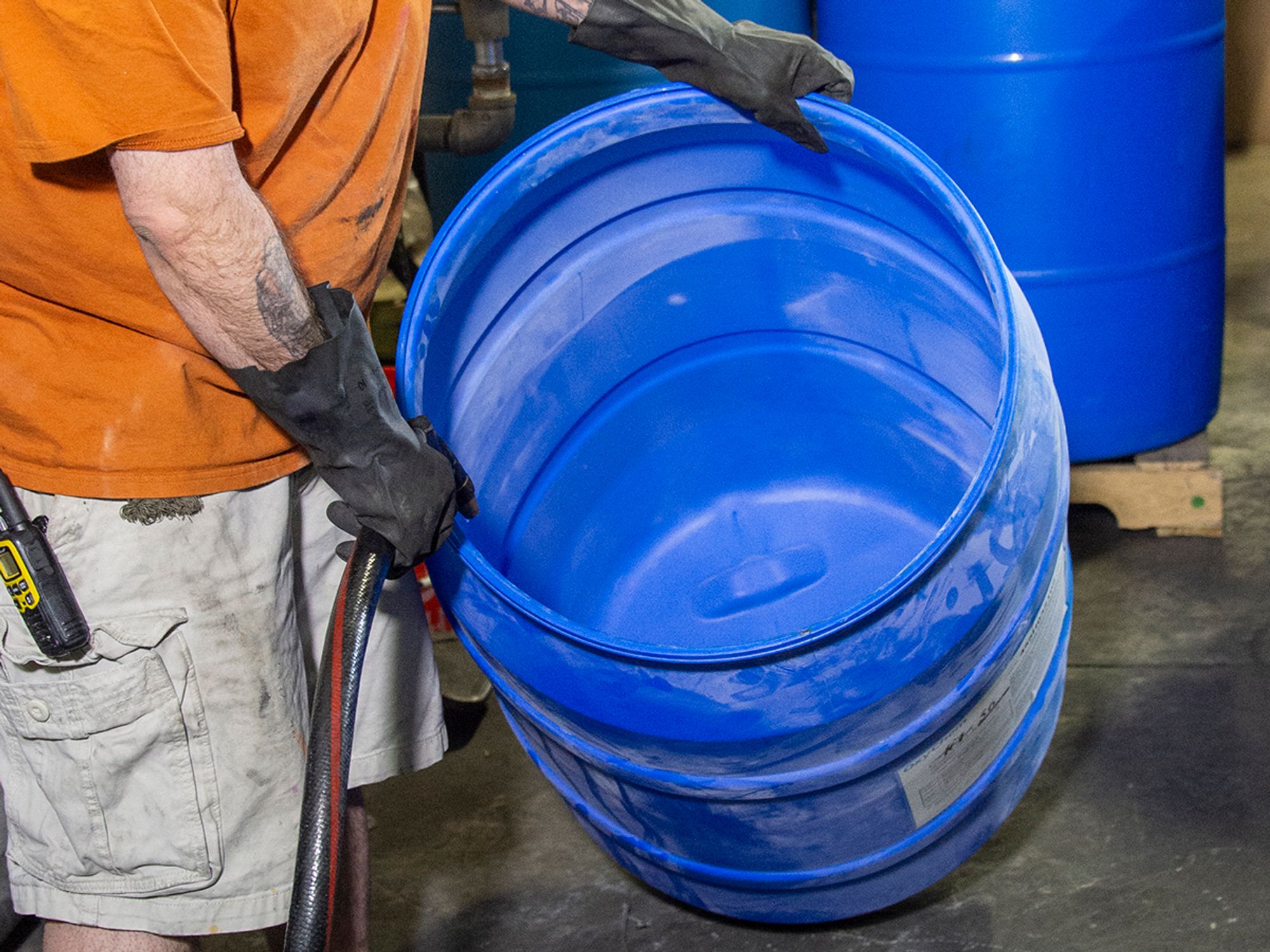Empty packagings

- Empty packagings with the residue of a hazardous material must be treated the same as when the packaging contained a greater quantity of the HM.
- Additional HMR requirements do not apply if the empty packaging follows certain provisions.
An empty packaging containing only the residue of a hazardous material must be offered for transportation and transported in the same manner as when it previously contained a greater quantity of that hazardous material, unless otherwise provided in Section 173.29.
An empty packaging is not subject to any other requirements of the Hazardous Materials Regulations (HMR) if it conforms to the following provisions:
- Any hazardous material shipping name and identification number markings, any hazard warning labels or placards, and any other markings indicating that the material is hazardous are removed, obliterated, or securely covered in transportation. (The provision does not apply to transportation in a transport vehicle or a freight container if the packaging is not visible in transportation and the packaging is loaded by the shipper and unloaded by the shipper or consignee.)
- The packaging:
- Is unused;
- Is sufficiently cleaned of residue and purged of vapors to remove any potential hazard;
- Is refilled with a material which is not hazardous to such an extent that any residue remaining in the packaging no longer poses a hazard; or
- Contains only the residue of an Other Regulated Materials—Domestic (ORM-D) material; a non-flammable gas with no subsidiary hazard at an absolute pressure less than 280 kPa (40.6 psia) at 20 degrees C (68 degrees F); and
- Any material contained in the packaging does not meet the definitions in Section 171.8 of the HMR for a hazardous substance, a hazardous waste, or a marine pollutant.
A non-bulk packaging containing only the residue of a hazardous material covered by Table 2 of Section 172.504 of the HMR:
- Does not have to be included in determining the applicability of the placarding requirements of Subpart F of Part 172; and
- Is not subject to the shipping paper requirements of the HMR when collected and transported by a contract or private carrier for reconditioning, remanufacture or reuse.
Provisions for describing an empty packaging on a shipping paper are detailed in Section 172.203(e). A package which contains a residue of an elevated temperature material may remain marked in the same manner as when it contained a greater quantity of the materials even though it no longer meets the definition in Section 171.8 for an elevated temperature material.
Note: It is important to note that unless all traces of the hazardous material have been removed, the packaging still possesses the hazard of that material and as such still poses a risk in transportation.
